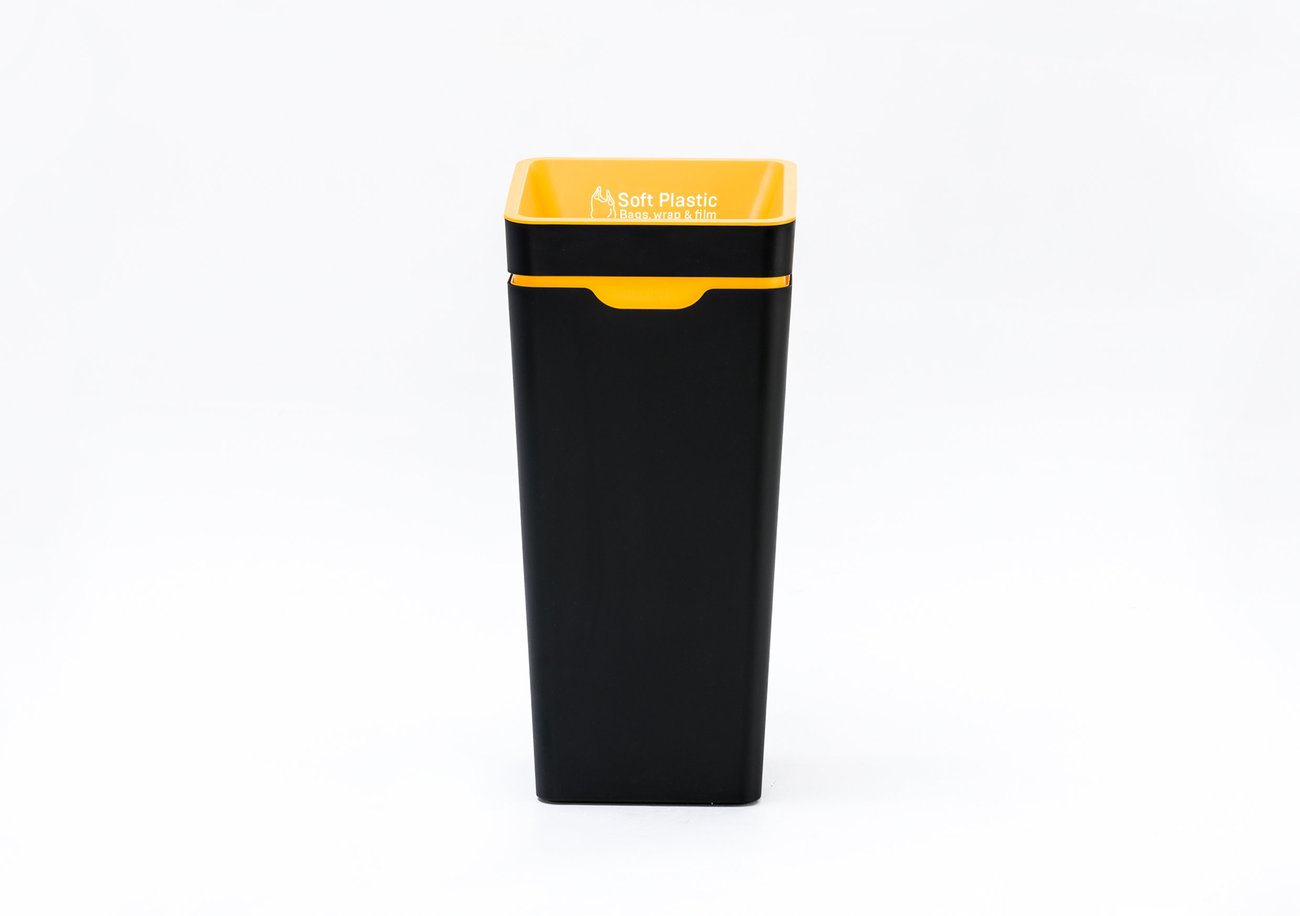Can beautifully designed recycling bins save the world? New Zealand company Method is trying.

Let’s talk about rubbish.
No, really.
We cool? Ok, on to it.
New Zealand company Method makes bins. But that’s far from the story here: they make bins designed to not only be (surprisingly) aesthetically interesting, but also ergonomic, more efficient than traditional bins – and are using their bins to encourage what they call “open plan recycling.”
Interested yet?
As Idealog reported back in 2015, husband-wife team India and Steven Korner spent time talking to cleaners and architects, and three years in development, before coming up with the design for an interlocking recycling bin system. “We were surprised at the poor quality of recycling solutions available for modern offices,” India Korner said at the time. “We saw sophisticated corporate environments where the recycling system was an afterthought – in conflict with the aesthetic created by architects and designers.
“Ugly bins were hidden in cupboards or in the kitchen. Despite recycling at home, few made the transition to recycling at work although many companies prided themselves on being sustainable.”
Fast-forward to the present, and Method’s business is booming. The first run of the company’s 60-litre polypropylene recycling bins (which can lock together to form a larger “station”) quickly sold out when they were launched in January 2015, and since then Method has supplied bins for big-name New Zealand businesses and organisations including Xero, Te Papa and TradeMe. They also supply smaller clients, and even clients overseas – in fact, according to content marketing head Jenny Rae, Method delivered no fewer than 1,000 bins to a client in New York City this past February, one of their largest orders ever. Oh, and has it been mentioned that Method made the Deloitte Fast 50 for Wellington and the lower North Island last year (on top of heaps of other awards like being a finalist in the 2016 New Zealand Innovation Awards, and a bronze winner in the Packaging – Product category at the 2015 Best Design Awards)?
While the success is “fantastic,” Rae says there’s a bigger mission behind what Method does. “Our bins were designed with workplaces in mind,” she explains, adding that traditional bins are “often hidden away” out of sight, which discourages recycling because of the amount of work required in actually recycling something.
Rae explains that Method’s bins encourage “open plan recycling” because they’re more accessible and visible – meaning that less work is required to recycle something, no matter if it’s in an office, restaurant, public place, or elsewhere. “The idea is to have recycling stations throughout the space.”
Clients seem to agree with Rae. Foodstuffs NZ sustainability manager Mike Sammons is a fan. “In my view there’s no point buying cheap bins that break and people don’t like using or emptying,” he says. “Method recycling bins are a quality product with a great design. They help to engage staff and help Foodstuffs supermarkets divert waste from landfill.”

Envirowaste national business development manager Antony Lee says something similar. “We have found the Method range to be a great tool for our key clients who are serious about minimising waste to landfill, but also want a quality corporate look to their internal bin systems.”

While Rae says “it’s going to be an exciting year” – and mentions the company will soon be sending bins to a large organisation all the way away in London – what’s most exciting is that corporates are seeing the value in sustainability and recycling beyond just PR campaigns – and are actually doing things about it. “There’s a huge rise in education around sustainability in recent years,” she explains. “Bins are one of those everyday items that have been overlooked.”

But if there’s one thing that can be taken away from this story, it’s that things seem to be changing. Waste not, want not – or at least recycle more.





